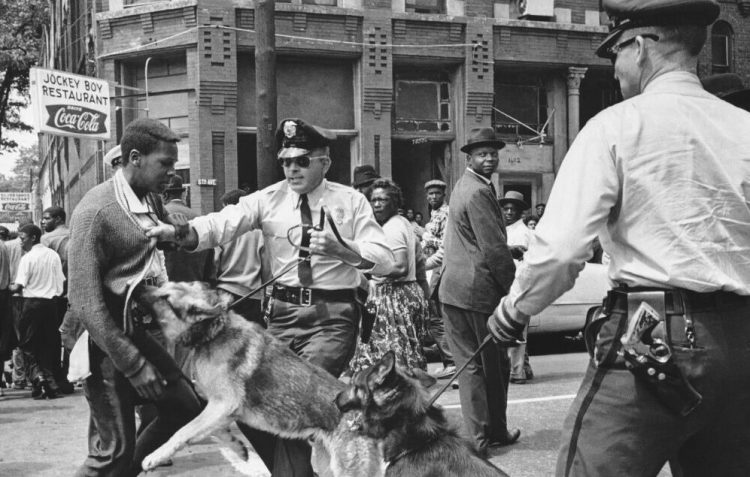News stories about civil rights protests – and the brutal official crackdowns that often followed – shocked the nation’s conscience in the 1960s.
Some Southern politicians recognized that images of peaceful demonstrators being attacked by police with clubs, dogs and firehoses did not make a good case for the continuation of legal segregation, and they needed to fight back. They did it by filing libel suits in state courts, demanding damages big enough to put some newspapers that ran the stories out of business and stop others from taking the risk.
By 1964, there were $300 million in such claims pending when the U.S. Supreme Court issued its landmark New York Times v. Sullivan decision, which established that the people’s right to criticize the government and the powerful is so fundamental to our system that public figures needed to meet a very high test before they could be awarded damages. To win a libel case after Sullivan, they had to prove not only that the statement about them was false and defamatory, but also that its author had “actual malice,” or had published a story knowing that it wasn’t true or had acted with “reckless disregard” for the truth.
So it was chilling to read that at least one member of the Supreme Court, Justice Clarence Thomas, thinks it’s time to reconsider the half-century-old Sullivan decision.
Such a move would have at least one enthusiastic supporter – President Trump, who has been saying we should be “looking at the libel laws” since he first hit the campaign trail. But it would be very bad news for those of us who care about a free press.
The Sullivan case resulted from an ad published in The New York Times with the intention of raising money for Dr. Martin Luther King Jr.’s defense fund. An elected official named L.B. Sullivan said his reputation had been damaged by the ad, which contained some exaggerations, because it criticized the actions of the police department he supervised.
He went to an Alabama state court and sued four African American clergy members who signed the ad, as well as the Times, where it had run.
He was awarded $500,000 in damages (more than $4 million in today’s money).
But the Supreme Court ruled that even if there had been factual errors in the advertisement, it was exactly the kind of speech that the Founders wanted to protect when they wrote the First Amendment.
“That erroneous statement is inevitable in free debate, and that it must be protected if the freedoms of expression are to have the breathing space that they need … to survive,” Justice William Brennan wrote. The opinion seems to anticipate the modern celebrity gossip sheets that hide behind the First Amendment with a quote from James Madison, saying: “Some degree of abuse is inseparable from the proper use of every thing, and in no instance is this more true than in that of the press.”
Thomas wrote that the protections in Sullivan were unnecessary.
“We did not begin meddling in this area until 1964, nearly 175 years after the First Amendment was ratified,” he wrote of the Sullivan decision. “The states are perfectly capable of striking an acceptable balance between encouraging robust public discourse and providing a meaningful remedy for reputational harm.”
Back in 1964, Alabama was unable to strike that balance, and there is no reason to believe that every state would do better today.
The Sullivan decision makes real the Constitution’s promise of free speech and equality. It doesn’t need to be “looked at,” except in appreciation.
Send questions/comments to the editors.



Comments are no longer available on this story